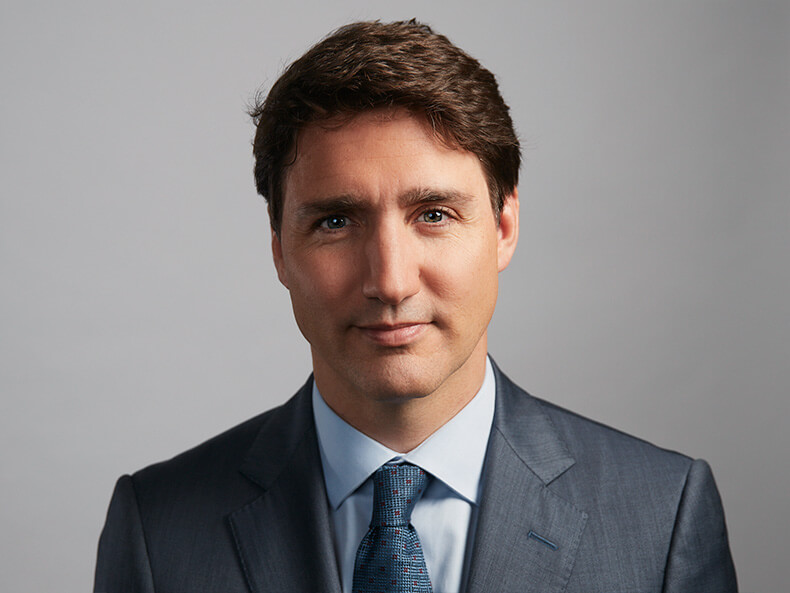Final counts pending
Party standings
Liberals win minority government
Justin Trudeau will be returning to the Prime Minister's Office, but this time he will be leading a Liberal minority government. The Bloc Québécois will enter the 43rd Parliament with a far stronger presence. The NDP surge some pollsters anticipated did not materialize but the party does have enough seats to hold the balance of power in a Liberal minority government. The Conservatives increased their share of the popular vote and their seat count and continue to be the official opposition.
Find my riding
To find a riding, select a province or territory from the list, or zoom in on the map. Ridings can be added to your watchlist.

Liberals lost support but not government
The Liberals lost support and lost seats, but they didn’t lose government. The Bloc Québécois and Conservatives made gains, but only the Bloc is likely to be satisfied with them — the Bloc might hold the balance of power going forward, while the Conservatives will go back to the opposition benches.
The New Democrats managed to win enough seats to potentially have an important role in the House of Commons, but the party took a big hit in Quebec — where the bulk of the seats that have changed hands were located.
Gains and losses

Bloc Québécois sees big gains, Liberals hold Ontario
The Liberals suffered losses in every region of the country — especially at the hands of the Bloc Québécois in Quebec — but not enough to cost Justin Trudeau his government. Ontario was key for the Liberals. The vote held up there and about half of the caucus will come from the province.
With the Liberals dropping, the Conservatives made some small inroads (though they also lost in Quebec) and will win more seats than they had in 2015, but fell well short of their best hopes. They gained at the expense of both the Liberals and NDP in the Prairies, but otherwise the New Democrats largely held their own. The exception again was Quebec, where NDP incumbents had the toughest task — the party retains a minimal presence in the province.
Regional breakdown
How did the parties perform in your region? Dive into the data below to see how party standings, popular vote, seat gains and losses break down by province and territory.
Standings
Popular vote
Gains & losses

A sizeable minority and the largest opposition
Though the Liberals lost some 30 seats, they still won a sizeable minority government, with more seats than either Paul Martin or Stephen Harper captured in any election during the minority years between 2004 and 2011. Both the New Democrats and Bloc Québécois won enough seats to hold the balance of power. In raw numbers, the Conservatives will form the largest Opposition in Canadian history.
Seats in the House of Commons
Contrast the number of seats each party will have in the 43rd Parliament with how they performed in 2015.
The seating chart doesn't represent where MPs will actually be sitting in the House of Commons.
Compare seat counts
Popular vote breakdown by region
The Conservatives won the popular vote, the first time that a party has won the most votes but not the most seats since the 1979 federal election. They increased their share of the vote by nearly three percentage points, while the Liberals dropped almost seven points. The Liberals slipped across the country, but least dramatically in Ontario and Quebec. The Conservatives also dropped narrowly in these two provinces, but saw big gains in Western and Atlantic Canada.
The NDP saw their vote share drop, but their results were mixed across the country. The Bloc jumped 14 points in Quebec and the Greens picked up throughout Canada, most significantly in New Brunswick and Prince Edward Island.
Compare popular vote
| Northwest Territories | Nunavut | Nefoundland | Prince Edward Island | Nova Scotia | New Brunswick | Quebc | Ontario | Manitoba | Saskatchewan | Alberta | British Columbia | Yukon | |
|---|---|---|---|---|---|---|---|---|---|---|---|---|---|
| Liberal | |||||||||||||
| Conservative | |||||||||||||
| New Democrat | |||||||||||||
| Bloc Québécois | |||||||||||||
| Green | |||||||||||||
| People's Party | |||||||||||||
| Other |
Races to watch
These were the races to watch on election night. See how the parties performed in each.
Fredericton
Green breakthrough hopes
The Greens had their first breakthrough in the Maritimes back in 2014, when David Coon won the provi ...
Laurier—Sainte—Marie
Quebec politics shifting
Laurier–Sainte-Marie is densely populated, highly educated and has the second-highest number of both ...
Trois—Rivières
Change in Quebec
Trois-Rivières was a Bloc Québécois stronghold for nearly 20 years until the New Democrats won it in ...
Aurora—Oak Ridges—Richmond Hill
Ford effect in the GTA
Located in a traditional swing region of the country, this riding north of Toronto was won by the Li ...
Davenport
Future of the NDP
This densely populated riding, where nearly half of commuters take public transit to work, is a key ...
Milton
Conservative-Liberal battleground
A fast-growing riding full of young families, Milton is one Conservative riding where the Liberals m ...
Peterborough—Kawartha
Conservative-Liberal battleground
Since 1957, the riding anchored by the city of Peterborough has voted with the party that formed gov ...
Edmonton Centre
Liberal hopes in Alberta
If the Liberals are banking on holding any seats in Alberta, Edmonton Centre should be right at the ...
Burnaby North—Seymour
Pipeline politics
If there is one riding where the Liberals could feel the political fallout from the purchase of the ...
Vancouver Granville
Independent candidate
The urban centre of Vancouver generally has been friendly territory for the Liberals over the years, ...

Bellwether riding, pipeline politics and an Independent
The Greens scored a breakthrough in Atlantic Canada in Fredericton while the Liberals were able to win Laurier–Sainte-Marie against challengers from the NDP and Bloc. Trois-Rivières lived up to being the three-way contest that was expected, with the Bloc candidate squeaking by with less than 30 per cent of ballots cast.
In and around Toronto, the New Democrats came up short in Davenport but the Conservatives elected a floor-crosser in Aurora–Oak Ridges–Richmond Hill. The Conservatives didn’t get their deputy leader through, however, as Lisa Raitt fell to Liberal former Olympian Adam van Koeverden in Milton.
And Peterborough–Kawartha continues to be a bellwether, with the riding being represented again by an MP on the governing benches.
In the West, pipeline politics might have cost the Liberals their seat in Edmonton Centre, but they retained their seat in Burnaby North–Seymour, where the Trans Mountain pipeline meets the sea. And in Vancouver Granville, Jody Wilson-Raybould will continue to do politics “differently” as a re-elected Independent.
Leader watch


Wins Seat
Loses Seat


Wins Seat
Loses Seat


Wins Seat
Loses Seat


Wins Seat
Loses Seat


Wins Seat
Loses Seat


Wins Seat
Loses Seat